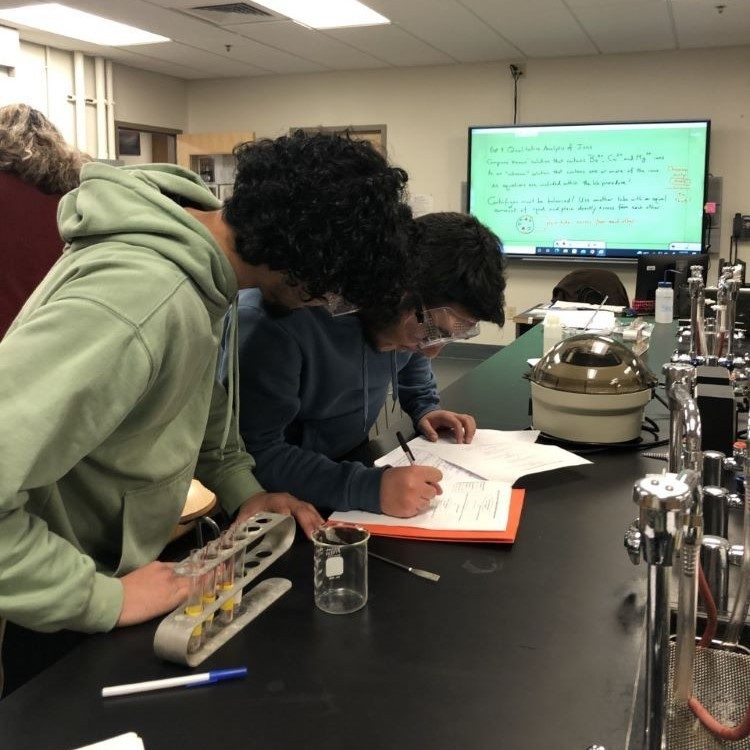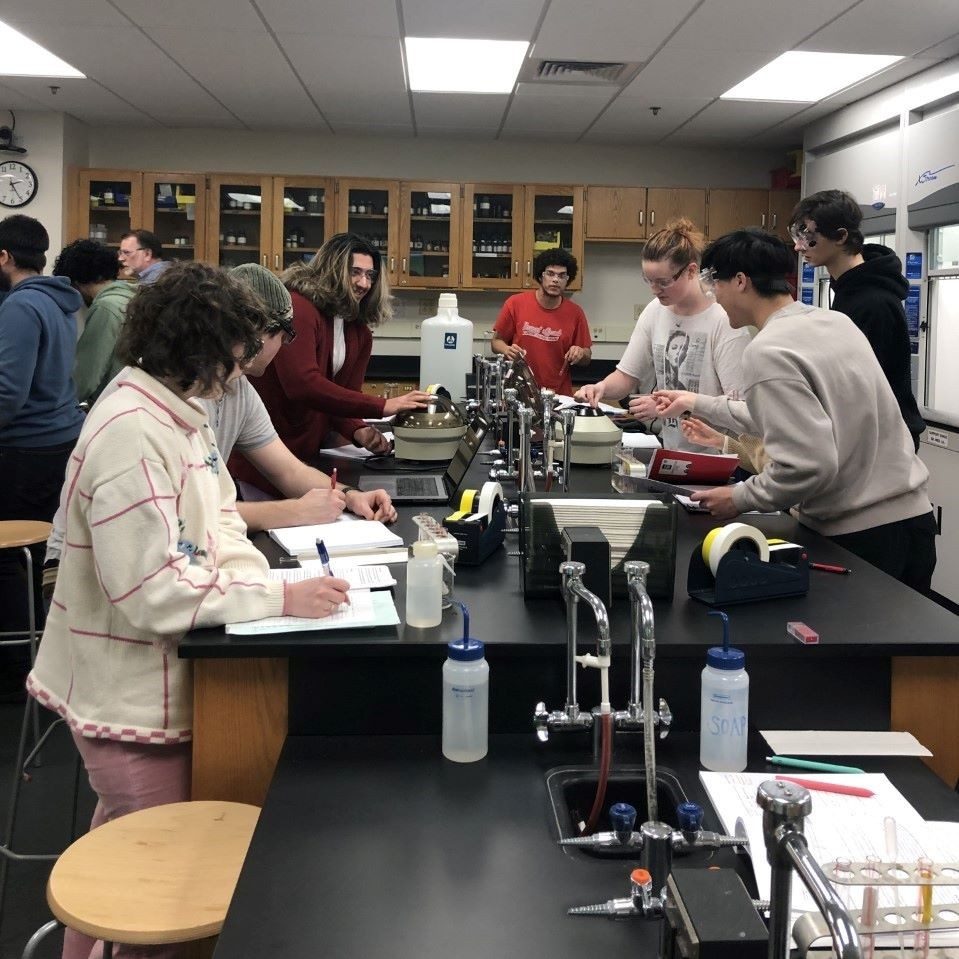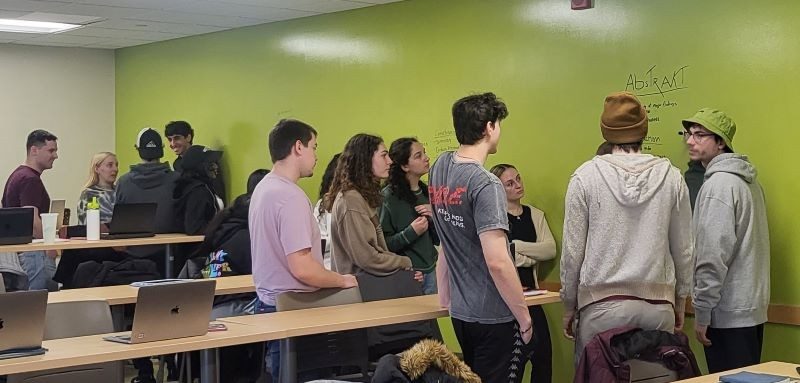Faculty and students from an array of backgrounds build breadth in education.
by Mike May for the American Chemical Society
Building depth into a chemistry education depends on more than the curriculum. The backgrounds of the faculty and students also expand the experience of studying chemistry. Here, we talk with leaders of two chemistry departments that strive for diversity—in the broadest sense.
In southern New York, just north of the border with Pennsylvania, Binghamton lies where the Chenango River meets the Susquehanna. Leveraging the agricultural history of the area, the State University of New York at Binghamton grows new “crops,” including some of tomorrow’s chemists.
“We are a medium-size department,” says Eriks Rozners, professor and chair of the department of chemistry at the State University of New York at Binghamton. The department consists of 20 research faculty, including Nobel laureate Stanley Whittingham, plus about 20 instructors, lecturers, and support staff. This department receives $4–5 million each year in research funding from the U.S. National Institutes of Health and the National Science Foundation. Currently, the department trains 81 PhD students, and aims for 100.
Rozners notes the department’s appeal to new faculty members: “We have been very successful with attracting and hiring very talented, hardworking, successful junior faculty.” The department also spread out to other areas of chemistry when it developed new strengths in biochemistry and chemical biology, including doctoral programs in these disciplines.
When asked what stands out about the department, Rozners says, “We are very collegial and we help each other.” He adds that the faculty includes geographic diversity. “I’m originally from Latvia, and we have faculty from all over the world,” he says. “It’s kind of an inclusive environment, and I think that’s probably what we are the proudest of.”
When Rozners took over as the chair of the department, he hoped to improve graduate-student support. During regular semesters, graduate students receive support as teaching assistants, but Rozners wanted to do even more. “One of my goals was to attract funding from donors or to create research fellowships,” he says. “At that time, we had two or three fellowships that allowed our graduate students to add extra funding for summer work.” Rozners added two more summer fellowships for graduate students, so that, as Rozners puts it, “students would be rewarded for their efforts.” Overall, he says, “My goal was to ensure that 100% of our students are supported, no matter what the funding would be.”
In fact, Rozners shows his deep appreciation for the contributions that students make to the department. “We can be very proud of the $4 million of research funding for faculty grants, but without the work of graduate students, without work of postdocs, none of that would be possible,” he says. “Essentially, it all comes down to their efforts.”
Rozners and his colleagues also work with the American Chemical Society (ACS) in various ways. “We have a very active local section that organizes events,” he says, “and we’ve been very active in organizing meetings.” Adding that activity to an ACS-certified degree for undergraduate chemistry majors, Rozners concludes, “We are active in ACS, and we feel that we are integrated into this society.”
The ACS-certification also helps Rozners and his colleagues provide undergraduate students with a more complete experience. “We meet the rigorous standards, and even teach necessary classes even if only 10 students sign up,” he says. “It’s all about the quality of the education, which ACS helps us to maintain, and even a small class can be clearly justified.” As he puts it: “It’s not all about numbers.”
Relying on hard work
A bit less than 200 miles to the south of Binghamton, students in the two-year chemistry program at the Community College of Philadelphia (CCP) reflect the melting-pot origin of the country, which was established in this city. As chemistry professor Linda Gerz notes, “We have a lot of international students and students with diverse backgrounds.” Such an assorted student body creates much of the foundation of CCP’s chemistry department. As Gerz puts it: “It’s a nice place, unique in that you see so many different kinds of people work together and excel.”
Students also come to CCP with a range of academic readiness. “Some of our students may need to take remedial courses before being admitted into the chemistry program,” says Gerz. “They do that, and then they go through and they finish.” As an example, she describes one student who lacked the necessary math background. “She started at a pre-algebra level, and then she had to take algebra, trig, pre-calc, and calculus to even get into the program,” Gerz says. “She had to do all that work just to take intro chemistry, but she did it and graduated.” Such drive and persistence impresses Gerz. “Our students are hardworking,” she says. “Their desire for knowledge and for learning is inspiring.”
Gerz and her roughly 20 colleagues—full-time and part-time faculty, plus lab managers—work hard to expand the opportunities for CCP chemistry students. As one example, Gerz says, “I collaborate with the University of Penn’s Singh Center on an NSF grant that is focused on nanotechnology education, and we have spots for students to do internships over the summer.” Another member of the chemistry department collaborates with a faculty member in the biology department who has an NSF Research Experience for Undergraduates (REU) grant.
After graduation, many CCP chemistry students dive even deeper into science. “Students who pursue this degree often continue to pursue their bachelor’s degree in chemistry or biology,” Gerz explains. “Some pursue professional study programs, such as pharmacy, medicine, or dentistry.” Others go from CCP to a job, such as being a quality-control technician at a pharmaceutical company.
Beyond the pride that Gerz exudes for her students, other aspects of the department stand out to her, as well. “Just before I got on the meeting with you, we were talking about our instrument analysis course,” she says. “Even as a two-year institution, we have some equipment that some four-year departments don’t even have.” As examples, she points out atomic absorption and UV-Vis spectrophotometry, FTIR, GC, GC-MS, and NMR. As Gerz exclaims: “This is quite impressive for a two-year program!” Keeping all of those instruments up and running, though, could be challenging, but Gerz adds that “our lab staff and faculty all chip in to make sure that everything gets done.”
Some of those faculty members, Gerz says, “have good ties with the American Chemical Society, and we follow the ACS guidelines.” CCP also works with ACS in other ways. Once, for instance, an ACS representative visited CCP to talk with students about career opportunities in chemistry. “It was really good, because they got to hear somebody from outside academia talk about chemistry,” Gerz notes. “I would like to have something like that again.”
In rounding up her thoughts about chemistry at CCP, Gerz concludes: “Our department is made up of wonderful people who pull together to have things run successfully!”
As students launch into chemistry-related careers—a world of vast opportunities—few things matter as much as a foundation built from working with faculty and students from around the world, all with different backgrounds and interests. SUNY Binghamton and CCP provide such a foundation for their chemistry students, who go on to build even stronger careers.




